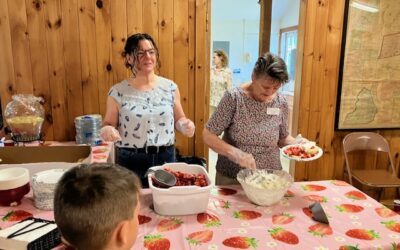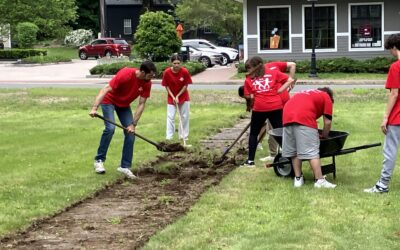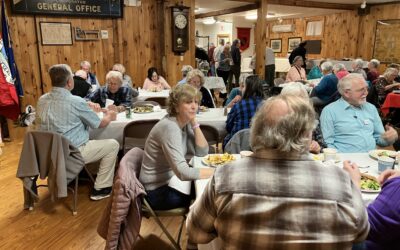
It’s Spring in New England and gardeners are finally able to get their hands in the dirt. Marian Staye, our building and grounds co-chair, is already out getting our gardens ready to welcome visitors back to the Deep River Historical Society.
We are very excited this year to introduce a new plant species to our gardens. Over the winter our researchers discovered the Fanny Munson Caladiums from Florida. This plant with heart-shaped pink variegated leaves thrives in shady gardens.
This species caught the eyes of our researchers because of its name. Fanny Taylor Munson of Jacksonville, Florida was Ada Southworth’s mother-in-law’s name. Ada bequeathed the Southworth home to the Deep River Historical Society in 1946. This is the current residence of the Society today. We needed to know more so our researchers started digging a little deeper and discovered a connection to Henry Nehrling, an ornithologist and horticulturist.
In 1893, Nehrling visited the Columbian Exposition in Chicago and was particularly impressed by the caladiums from Brazil. This interest inspired Henry to buy 40 acres of land in Florida to introduce these beautiful plants into the Florida landscape. This passion grew into a lifelong pursuit of hybridizing and commercially growing more than 1700 new varieties of caladiums, one of which was The Fanny Munson Caladium.
Henry was born in 1853, the same year as Fanny Taylor Munson. Fanny spent most of her adult life in Jacksonville and the Florida Keys. Henry was known to spend a lot of time in Jacksonville as well. The Jacksonville newspapers covered his discoveries. In talking with Henry’s grandson and going through Henry’s field books we learned that Henry often named his new varieties of caladiums for friends and family members. While Henry did not make any specific notations in creating the Fanny Munson variety, it is felt there is a strong possibility that the plant is named after Fanny Taylor Munson.
The Fanny Munson Caladium is in full bloom! Marian planted them in the Post caldron on the north side of the house. This black iron kettle was a gift from the Post family in 1966. The Post family homestead was located diagonally across the street from the Stone House. We hope everyone will stop by this summer to see the plants!



